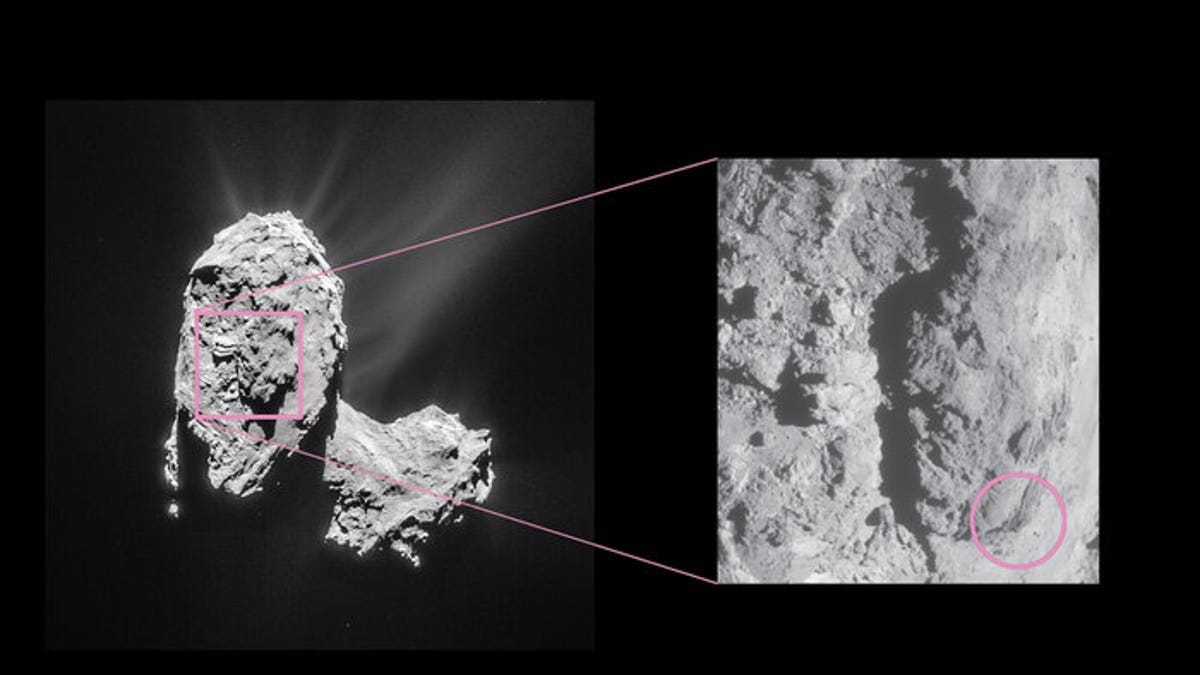
Screenshot from a GIF of the outburst released by the European Space Agency. (ESA)
The European Space Agency (ESA) has released stunning images taken by the Rosetta spacecraft that reveal a brilliant flash of light on the comet it’s studying that could have been caused by a landslide.
The outburst, as the space agency refers to the event, occurred on February 19, when Rosetta was about 22 miles away from the comet.
The probe’s instruments captured a variety of dramatic phenomena during the outburst: spikes in the amount of ultraviolet light reflected by the comet, as well as dust, plasma, gas, and a big temperature increase. The ESA has assembled images of the outburst into a GIF that shows it unfolding in half-hour intervals as the comet rotates.
The space agency said the event happened on the large lobe of the comet, which carries the name Comet 67P/Churyumov–Gerasimenko.

Outburst location. (ESA)
Eberhard Grün, the author of a study about the event that will appear in the journal Monthly Notices of the Royal Astronomical Society, said in a statement that they “think the outburst must have been triggered by a landslide at the surface, rather than a more focused jet bringing fresh material up from within the interior, for example.”
Related:
Rosetta launched on a mission to rendezvous with the comet and dispatch a lander, Philae, to its surface, which it did in November, 2014. But the landing didn’t go as planned, and the ESA soon lost contact with Philae. In July, the space agency shut down its communications link with the lander, which had been in “eternal hibernation” for some time, even if it did briefly communicate with Rosetta in 2015.
Rosetta’s journey will come to an end on September 30, when mission controllers send it on a “controlled descent” to the comet, and after that, it won’t be able to communicate anymore, although it will be able to make measurements on the way down.
Follow Rob Verger on Twitter: @robverger
